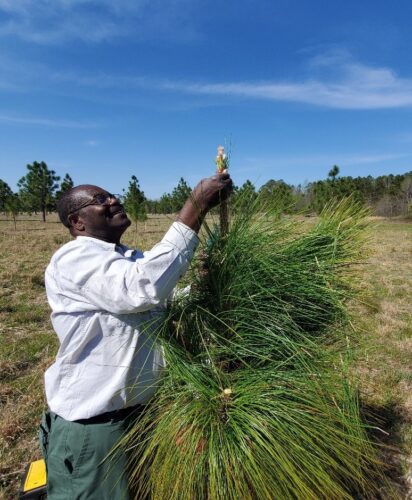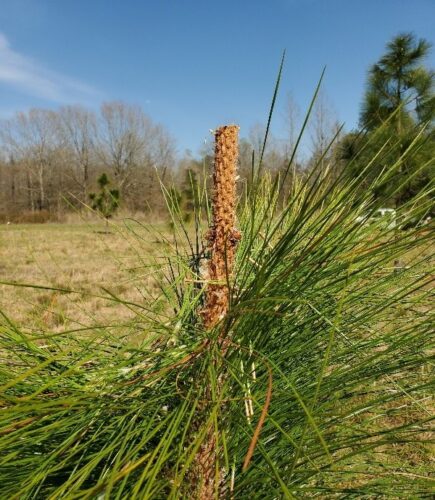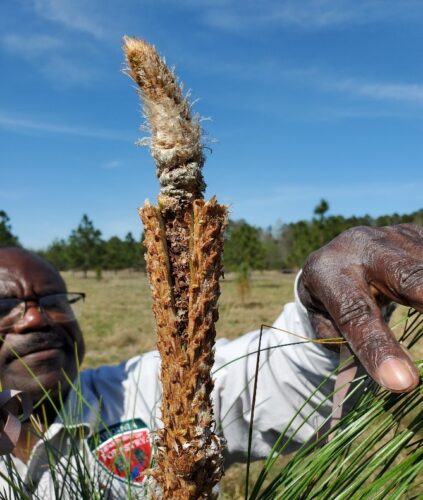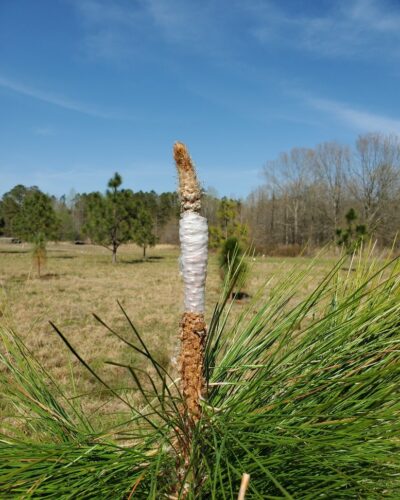Longleaf Grafting 101
April 18, 2022 1:57 pm
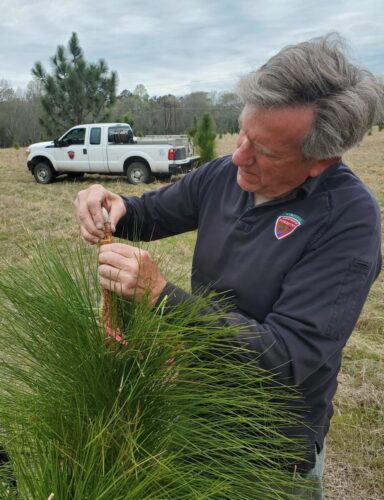
By Jim Schroering, DOF Longleaf Pine Coordinator and Ellen Powell, DOF Conservation Education Coordinator
Forestry usually takes place on a landscape scale. But some forestry work requires meticulous attention to detail. Just ask the team of DOF staff who recently undertook the painstaking process of grafting longleaf pines.
Grafting requires splicing a scion – a growing stem with desired characteristics – onto an established rootstock of the same species. You might be familiar with the grafting of fruit trees or roses, and the simple premise is the same: make two plants into one. To understand why DOF went to so much trouble, you might need a little background.
Longleaf pine (Pinus palustris) once covered large swaths of southeastern Virginia. For a variety of reasons – among them, exclusion of fire from the landscape and replacement with fast-growing loblolly pine – longleaf is now considered a diminished species in the state. As the cornerstone of an ecosystem that has become rare in Virginia, the decline of longleaf pine has resulted in the subsequent decline of several now-endangered species, including the red-cockaded woodpecker. DOF is working alongside other agencies and organizations to restore longleaf to much of its former range and restore these diminished ecosystems.
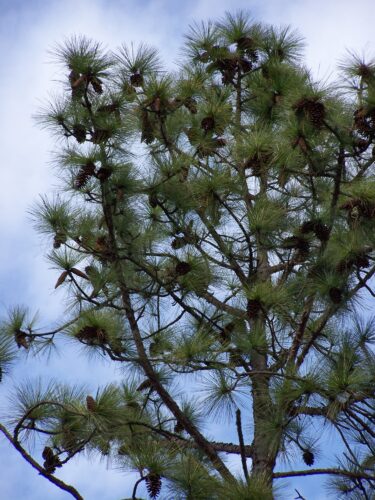
Longleaf pine
Clearly, longleaf pine is important, but why go to the trouble of grafting? Research has shown that native Virginia seed sources produce pines that are better adapted to survive and grow here than those from more southern sources. Unfortunately, the last natural stand of longleaf pines in Virginia contains only a few hundred trees. To preserve Virginia longleaf genetics, DOF collects seeds from the pines at the Department of Conservation and Recreation’s South Quay Sandhills Natural Area Preserve in Suffolk. Trees grown from those seeds make up the nursery stock at DOF’s New Kent Forestry Center. Grafting speeds up the process of cone production; by splicing cuttings of those trees onto other longleaf rootstock, we can get a head start on seed production and reduce the cost of future seed collection.
This year’s grafting process began with inventorying, measuring, and mapping each of the 735 longleaf pines (aged 1 to approximately 15 years) in the New Kent nursery. This allowed the correct parent trees to be selected and the proper rootstock (based on height and vigor) identified. In all, 79 scions were collected from 19 parent trees. After the scion wood was collected, it was tagged and cooled immediately so that it stayed healthy and viable.
In April, DOF employees Ones Bitoki (tree improvement specialist), Dennis Gaston (Eastern Region state forest forester), Ben Duke (Eastern Region state forest technician) and Jim Schroering (longleaf pine coordinator) completed the longleaf grafting. Here’s the process, in pictures:
- The needles were carefully removed from the tip of the rootstock.
- The top of the root stock was clipped off.
- An opening was cut into the rootstock.
- The scion was carved into a V-shape and inserted into the rootstock.
- The graft union was tightly wrapped with a thick grafting band…
- …then wrapped with parafilm to keep the graft dry and secure.

An aluminum foil wrap keeps the graft warm, and a tag identifies the parent tree, grafter, and date.
Over the next few weeks, the scions will be monitored to determine the survival of the new grafts. If the grafting is successful, the scion wood will expand and start to grow. Over the next few months, the aluminum foil, parafilm, and grafting bands will be removed to ensure the health of the new grafts. This project is another step forward in our efforts to restore an iconic tree to Virginia’s landscape.
Tags: Genetics, Longleaf Pine
Category: Forest Management, Nurseries, Research

